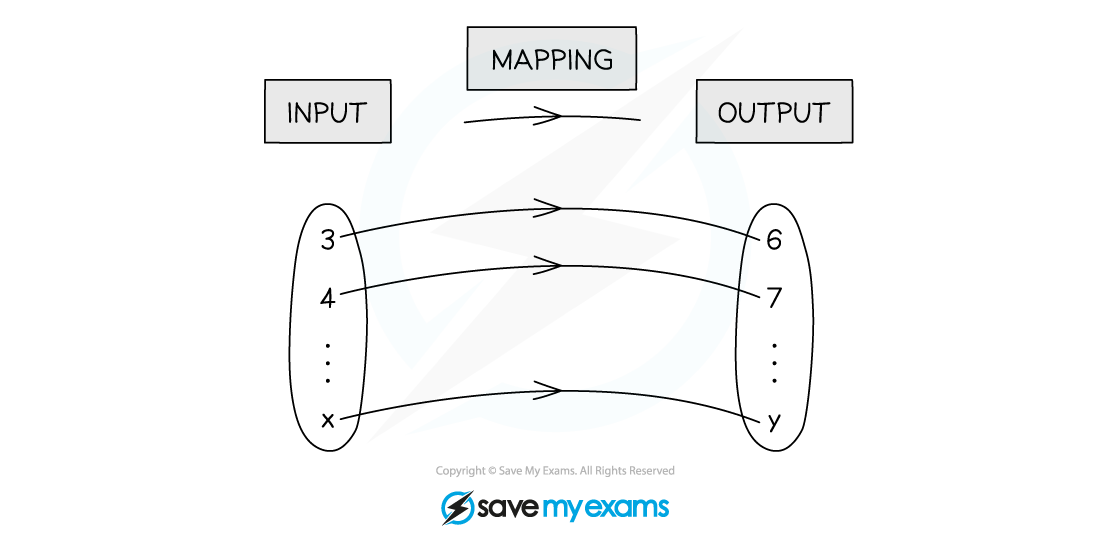Introduction to Functions (Edexcel IGCSE Maths A): Revision Note
Did this video help you?
Introduction to Functions
What is a function?
A function is a combination of one or more mathematical operations that takes a set of numbers and changes them into another set of numbers
The numbers being put into the function are often called the inputs
The numbers coming out of the function are often called the outputs
A function may be thought of as a mathematical “machine”
For example, for the function “double the number and add 1”, the two mathematical operations are "multiply by 2 (×2)" and "add 1 (+1)"
Putting 3 in to the function would give 2 × 3 + 1 = 7
Putting -4 in would give 2 × (-4) + 1 = -7
Putting
in would give
What is function notation?
A function, f, with input
can be written as
or
These two different types of notation mean exactly the same thing
Letters other than f can be used
The letters g, h and j are common but any letter can be used
Typically, a new letter will be used to define a new function in a question
For example, the function with the rule “triple the number and subtract 4” would be written
In such cases, "
" is the input and "
" is the output
Sometimes functions don’t have names like f and are just written as y = …
E.g.
How does a function work?
A function has an input
and an output
If the input is 2, then the output is
If the input is
, then the output is
If the input is
, then the output is
You cannot simplify this output any further
If the function is known, the output can be calculated
For example, given the function
If the output is known, an equation can be formed and solved to find the input
For example, given the function
If
, then form an equation by replacing
with
Solving this equation gives an input of 7
Note that
and
are very different things:
means an input of
gives an output of 15
means substitute the input 15 into the function
What is a mapping diagram?
A mapping diagram shows a set of different inputs going into the function to become a set of different outputs
Transforming inputs into outputs is called mapping
For example, a mapping diagram for the function
where
could be shown as:

Worked Example
A function is defined as .
(a) Find .
The input is , so substitute 7 into the expression everywhere you see an
Calculate
(b) Find , giving your answer in the form
where
,
and
are integers to be found.
The input is so substitute
into the expression everywhere you see an
This is like replacing with
Expand the brackets and simplify
Use that
Be careful with negative signs
(a = 3, b = 16, c = 22)
A second function is defined by .
(c) Find the value of for which
.
This notation is not saying substitute 16 into the function (that would be )
It says that an input is substituted into
giving the output -16 (i.e.
)
To find the input, form an equation by replacing with
Solve the equation (for example, by adding 4 to both sides, then dividing by 3)

You've read 0 of your 5 free revision notes this week
Sign up now. It’s free!
Did this page help you?

